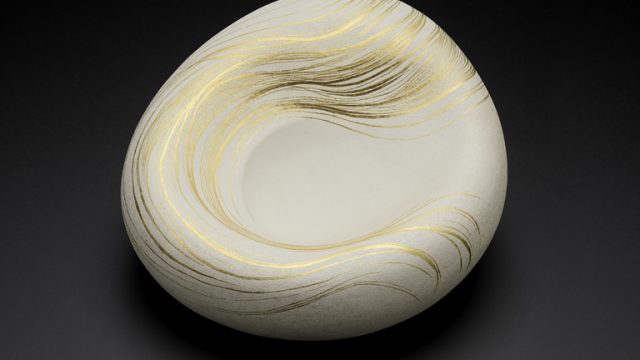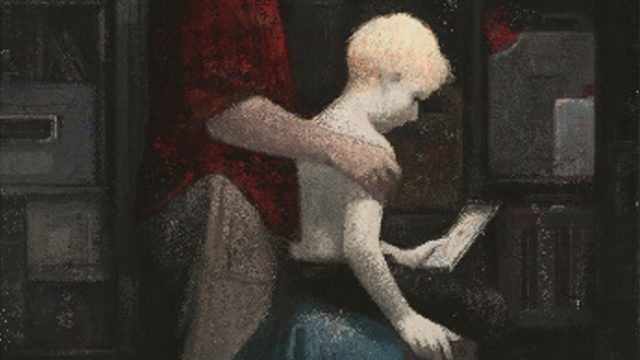For the third time, the Design Fund to Benefit the V&A has supported major contemporary acquisitions for the V&A collection. The five design projects acquired represent recent design debates and responses which make use of both traditional and contemporary materials, design methods and manufacturing techniques. The objects range from a hand-made toaster to a series of vessels made of natural polymers and a 3D printed gun. They are on display at the V&A in gallery 19a until the 20th of October.
The Design Fund was set up in March 2011 by arts patron Yana Peel, to bring together design enthusiasts with a shared passion for contemporary design and an interest in supporting the V&A’s aim to enrich people’s lives by promoting knowledge, understanding and enjoyment of the designed world. Over the last two years supporters of the Fund have enabled the V&A to buy 17 contemporary objects by such international designers as Fredrikson Stallard, Joris Laarman and nendo. Some of the pieces are now on permanent display in the V&A’s 20th century gallery and the new Dr. Susan Weber Gallery for Furniture, while others will go into future exhibitions.
Defense Distributed (Cody Wilson)
Gun: Liberator, 2013

‘Liberator’ gun, Cody Wilson / Defence Distributed, 2013
Texan law student Cody Wilson developed and fired the world’s first 3D-printed gun, the ‘Liberator’, in May this year. His company, Defense Distributed, created designs for guns and gun components that can be downloaded by anyone anywhere in the world and printed out on a 3D printer. The invention of this so called ‘wiki weapon’ sparked intense debate and upended discussions about the benefits of new manufacturing technologies and the unregulated sharing of designs online. The V&A has acquired two Liberator prototypes, one disassembled gun and a number of archive items to enhance its collection of 3D printed objects and represent a turning point in debates around digital manufacturing.
www.defdist.org
Gareth Neal
Chest of Draws: George, 2008/2013
Artist’s proof from an edition of five

‘George’ chest of drawers, Gareth Neal, 2008/2013
Neal is passionately interested in the history of furniture, and believes that designers must ‘look to the past to understand the future’. This 2013 chest of drawers made from ash is a development from an oak model made in 2008 and exhibited at the V&A. In certain positions the viewer can see the outline of a 1780s George III commode emerging from the rectilinear, contemporary chest of drawers. The idea for the surface of this piece came about when Neal made an error while learning computer drawing. To make George, Neal combines computer controlled routing machines, hand carving techniques, traditional craft and contemporary design.
www.garethneal.co.uk
Studio Formafantasma (Andrea Trimarchi and Simone Farresin)
Botanica, 2012
Four prototypes and material samples

Botanica, Studio Formafantasma (Andrea Trimarchi and Simone Farresin), 2012. Photograph by Luisa Zanzani
The vessels of the Botanica series are created as if in an era before oil was commonly used. The designers experimented with natural polymers extracted from plants and animals, aiming to develop a new aesthetic for a post-industrial world. Based on meticulous historic research, the objects challenge our current understanding of plastic materials and suggest new approaches towards sustainable alternatives. This project was commissioned by Plart, an Italian foundation dedicated to scientific research and technological innovation in the recovery, restoration and conservation of works of art and design produced in plastic.
www.formafantasma.com
Studio Makkink & Bey (Rianne Makkink and Jurgen Bey)
Ear Chairs, 2003
Prototypes

Ear Chairs, Studio Makkink & Bey (Rianne Makkink and Jurgen Bey), 2003
These chairs were designed for an office reception space. Paired together, they form a mini-environment – the ‘ears’ can create privacy or define space and the arm-rest functions as a small table. The designers combined the chairs with carpet and wall panelling that referenced the Sunday-room of a Dutch farmhouse. Despite this nod to history, the chairs aim to introduce a radical new way of working and living. They have been widely imitated in a range of seating designs in recent years.
www.studiomakkinkbey.nl
Thomas Thwaites
The Toaster Project, 2009

The Toaster Project, Thomas Thwaites, 2009-2010. Photograph by Daniel Alexander
British designer Thomas Thwaites decided to build from scratch a simple household appliance that cost £3.49 at Argos. He extracted and processed the raw materials himself using homemade tools and built a crude, but functioning, toaster that he admits “will bear a very imperfect likeness to the ones that we buy – a kind of half-baked, hand made pastiche of a consumer appliance”. If it were to go on sale it would cost £1187.54 – showing the vast economies of scale of large manufacturers.
www.thomasthwaites.com



Super idea mrs Scholze
Wow! I love these art pieces, the 3D gun definitely provokes discussion more than most due to its potential far reaching implications.